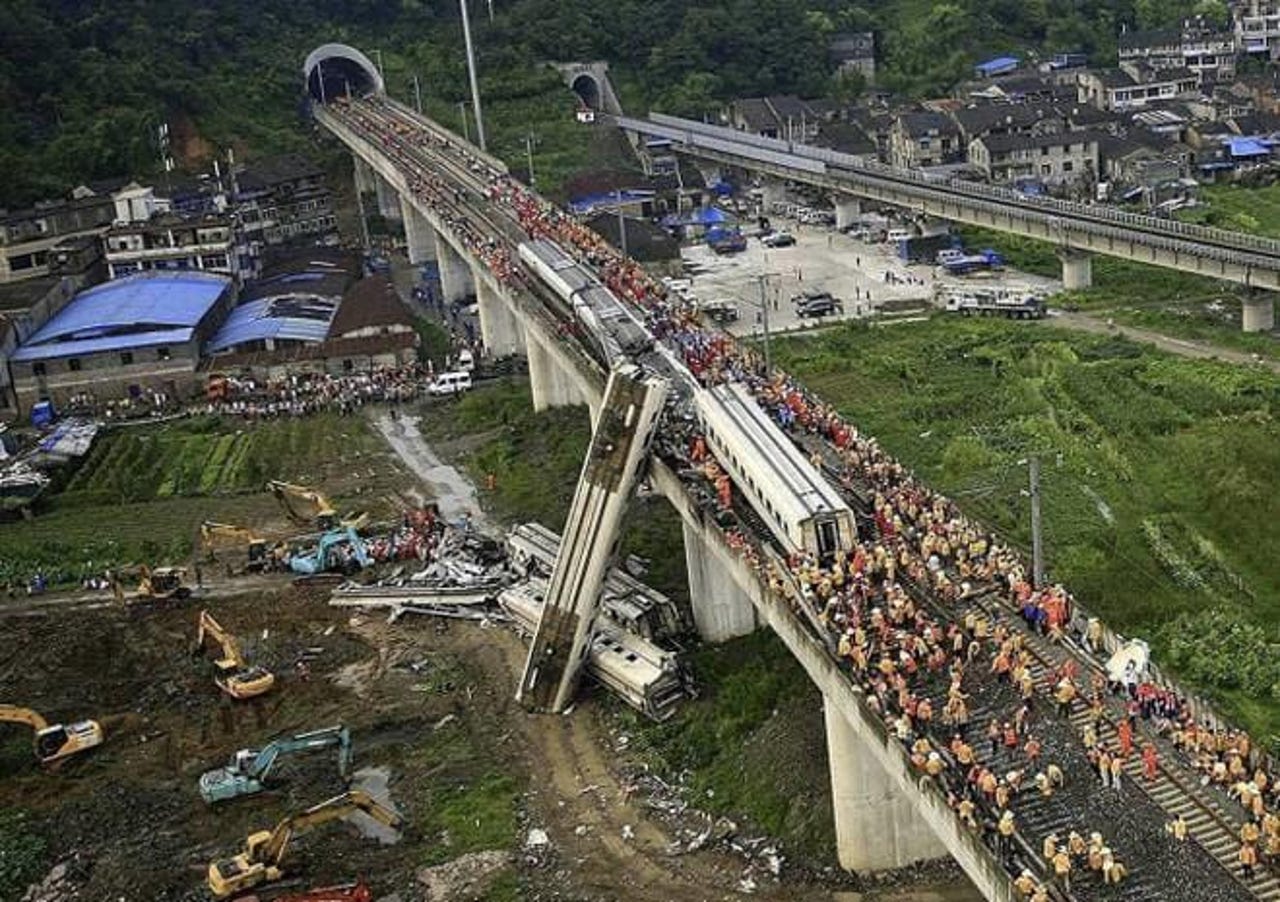Devastating: 5 major train crashes this year. Could autonomy help?


A few high-speed trains in China are about to get an updated set of eyes. That's thanks to a machine vision system for robots and autonomous vehicles. Perceptin, the company behind the vision system, is touting its device as a key upgrade that could bring semi-autonomy to high-speed trains by allowing them to see 1000 meters down the track.
Here in the U.S., where rail travel infrastructure has fallen woefully behind, news of autonomy coming to high speed trains may not move the needle much. Despite plans stretching as far back as the 1960s, there are currently only a small handful of high speed rail lines in the U.S. (and by international standards the few we have, like Amtrak's Acela Express, are underwhelming, topping out at about 150 mph).
Also: Rio Tinto completes rollout of world-first autonomous iron ore rail operation
But rail safety is a mounting concern even in the U.S. Less than a month into the New Year, there has already been one major safety incident involving a freight train carrying hazardous chemicals derailed in Georgia, prompting an evacuation of residents within a seven mile perimeter. As of this writing, there have been five major train crashes worldwide in 2019.
And around the world, passenger trains, and particularly high speed rail, is an integral part of daily travel. Japan's bullet train system has been around since 1964. China, more recently, has invested heavily in high-speed rail, which it sees as integral to connecting and modernizing distant provinces. With strong infrastructure spending and fewer political roadblocks, China has, in short order, created the longest high-speed rail system in the world.
The safety stakes are high. Tearing down the track at well over 200 mph, modern high-speed trains are pushing the bounds of human perception and reaction times. By the time a human conductor detects a potential danger and decides on a course of action, a train will have traveled hundreds or thousands of meters. A high-speed train collision in Turkey in 2018 left several dead and dozens injured. In 2011, China suffered its own devastating high speed train crash, an incident that called into question that country's rail safety standards.
Autonomy is a promising solution. France is currently developing autonomous transportation trains to increase safety and efficiency on its existing lines. But high-speed trains require lightning quick reaction times, putting pressure on autonomous systems. The careful orchestra of sensing and processing has to be fine tuned for both speed and accuracy.
Perceptin's device uses stereo vision, which enables distance calculation, a crucial variable in obstacle avoidance. Detecting on the visible spectrum increases range and reduces cost compared to LiDAR (although costs of LiDAR sensors have been falling the past few years).
"LiDAR sensors, which are commonly used in autonomous driving scenarios, suffer from a lack of detection range and semantic information, making them unsuitable for high-speed applications. Visual perception is currently the best solution that can be used in high-speed scenarios," said Shaoshan Liu, Founder and CEO of PerceptIn. "With our thousand-meter visual perception technology, we've created the longest range visual perception capabilities for high-speed rail while ensuring safety with critical functions such as obstacle avoidance and object detection."
Until recently, stereo vision has been extremely expensive. In large part that's because previous systems relied solely on mechanical calibration between cameras. Getting two lens pointed in precisely the right direction is difficult, and the resulting systems are fragile. But thanks to companies like StereoLabs and PIXMAP, a new generation of stereo vision sensors uses software to correct visual error, drastically reducing costs and upkeep.
MUST READ
- Are US trains really that bad? It's complicated (CNET)
- What is Hyperloop? Everything you need to know about the race for super-fast travel
- See trains from all over the world (CNET)
"To solve this challenging problem of producing reliable stereo visual sensors, we perfected seven different layers of technologies, including lens, image signal processing, image sensing, mechanical design, calibration, computing units, and algorithms," says Bo Yu, CTO of PerceptIn. "The end result is a perception module that can be used for any autonomous vehicle scenario including high speed rail and commercial transport."
Perceptin is collaborating with CRRC Corporation Limited, the world's largest rolling stock manufacturer, to deploy its system with China's high-speed trains, which approach 200 mph. The testbed will be closely watched by autonomous transportation proponents around the world.